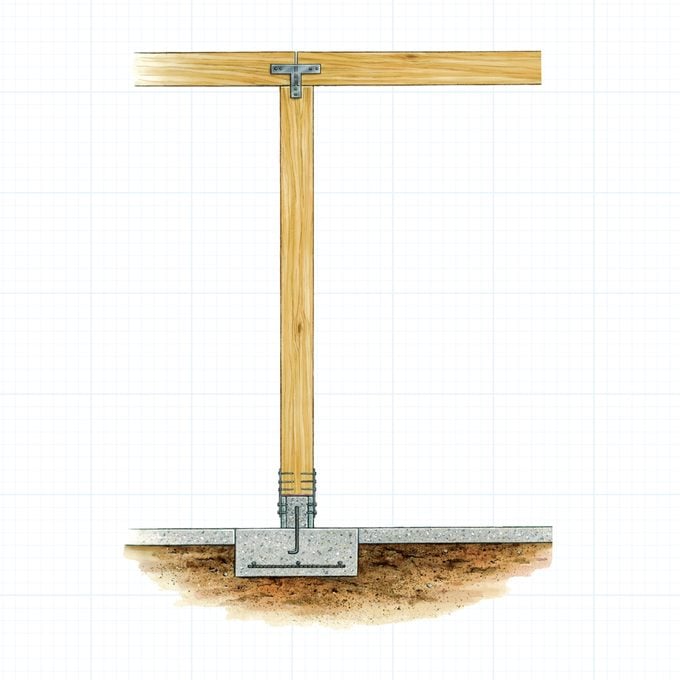What to Know Before DIY Load-Bearing Wall Removal
Updated: Oct. 04, 2023
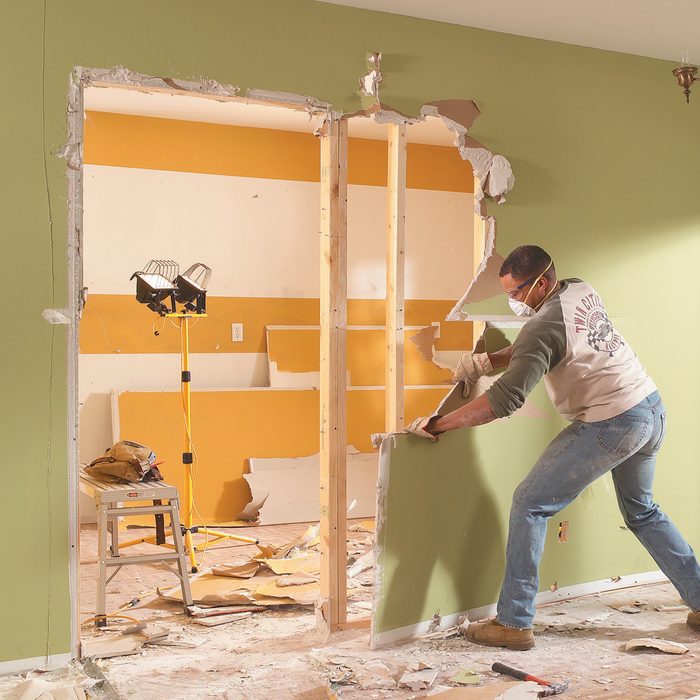
Load-bearing wall removal is achievable if you know the answers to the right questions. It's a matter of how much you're willing to spend.
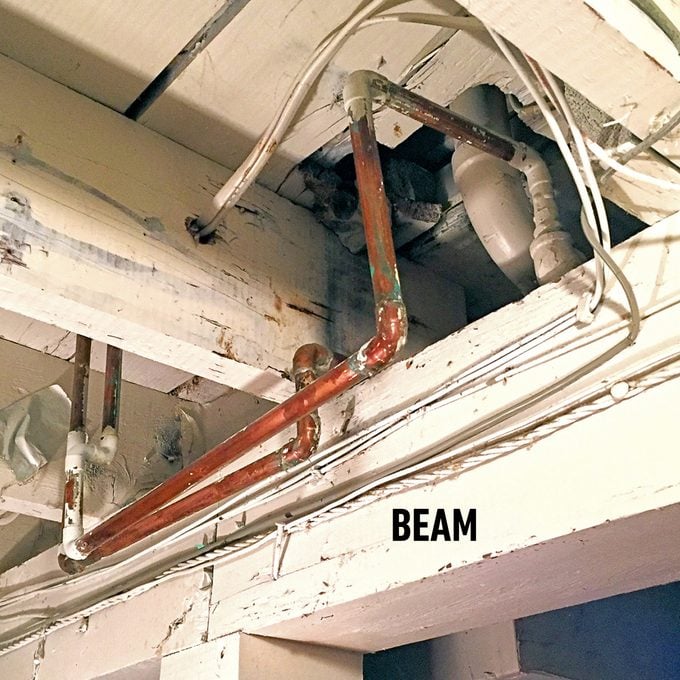
On This Page
Check to see what’s in the wall
You might think the first thing you should figure out when you want to remove a wall is whether the wall is load-bearing. But what’s inside the wall can present a much bigger obstacle. Heating, plumbing and electrical lines will have to be rerouted. And sometimes, moving those lines is a huge task— so difficult that removing the wall just isn’t practical.
A main drain running through the wall from a second-floor bathroom can be very difficult and expensive to reroute. Heating and air conditioning ducts often run through interior walls, and can also be hard to relocate.
So the first step is to figure out what’s hidden behind the drywall.
What’s Inside a Wall?
- Air ducts almost always run up and down through the wall. Supply ducts are usually sheet metal, and cold air returns like the one shown here use the stud space. If you discover either one, you’ll have to find a way to relocate it. This can be a difficult job if the duct supplies a room above.
- Water pipes can run vertically or horizontally-that gives you a lot of flexibility in relocating them. Just remember that in cold climates you can’t run them in outside walls.
- Waste and vent lines aren’t always easy to move because of plumbing restrictions on turns and horizontal runs. You may need a building inspector’s advice.
- Gas pipes are relatively easy to relocate, but you may need to hire a plumber to do it.
- Wiring is one of the easiest things to move, but all connections must be made inside a code-approved electrical box and the box must be left accessible. You can’t bury a junction box in the floor or ceiling.
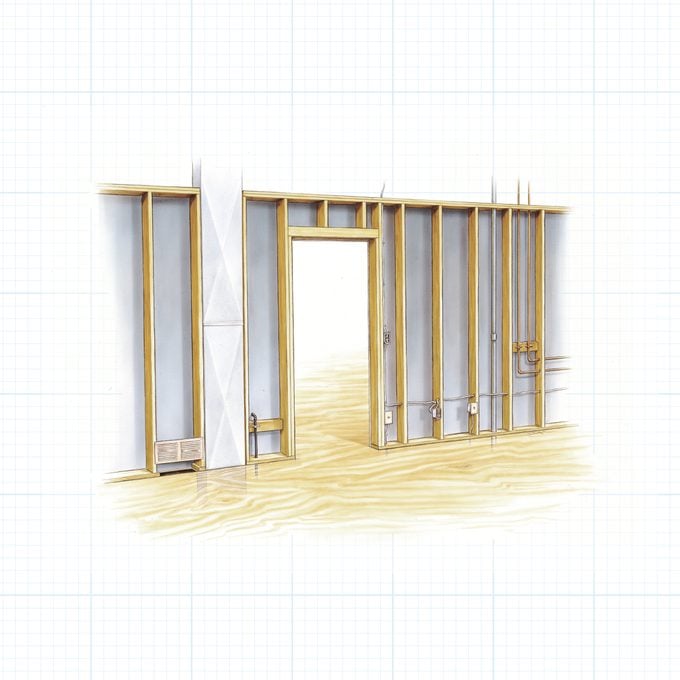
You can’t be absolutely certain what’s inside a wall until you tear off the drywall. But you can often get a very good preview by looking for a few clues:
- Cover plates, grilles or fixtures-look on both sides of the wall.
- Pipes or wires exiting the wall in the attic above or the basement below the wall.
How To Tell If a Wall is Load Bearing
Only some of your walls are needed to hold up your house. These are called bearing walls. The rest of the walls, the partition walls, are simply there to divide rooms. You can remove either type of wall. But if the wall is load-bearing, remember to take special precautions to support the structure during removal and to add a beam or other form of support in its place.
So how do you know whether a wall is load-bearing? Some bearing walls are easy to spot. If your wall conforms to the situation shown, you can be sure it’s load-bearing.
Ceiling or floor joists that are spliced over the wall, or end at the wall, mean the wall is bearing. Walls that are stacked may be load-bearing. Find these by measuring or by studying the floor plan of your house.
In some cases, you may not be able to tell for sure whether a wall is bearing. If you’re not sure, hire a contractor or structural engineer to help you figure it out.
Types of Walls
- The outside walls are supporting the roof, so they’re bearing walls.
- A beam directly under a wall usually means that it’s a bearing wall, whether the beam is in a crawl space, basement or on the main floor.
- Ceiling joists that meet over the wall indicate that it’s a bearing wall. It is carrying the weight of the ceiling.
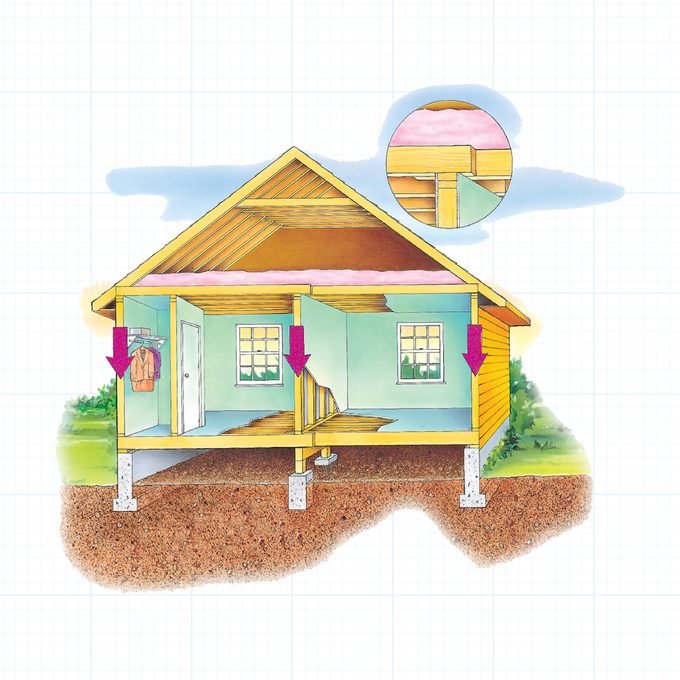
Options For Replacing a Bearing Wall
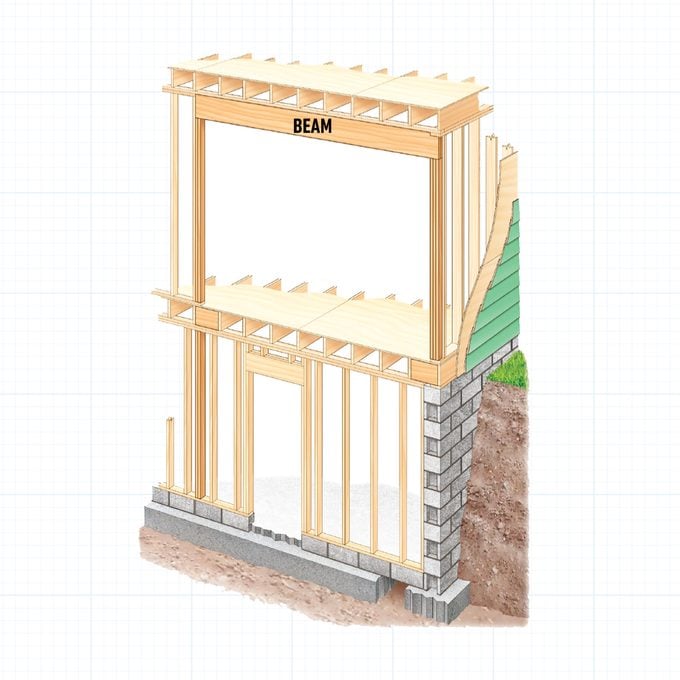
Adding a beam under the ceiling
The most common method to support the structure after you remove a wall is to add a beam under the ceiling. This method is easiest because you don’t have to cut into the joists or other framing above the beam. You also have to support the ends of the beam with posts that carry the load to the foundation.
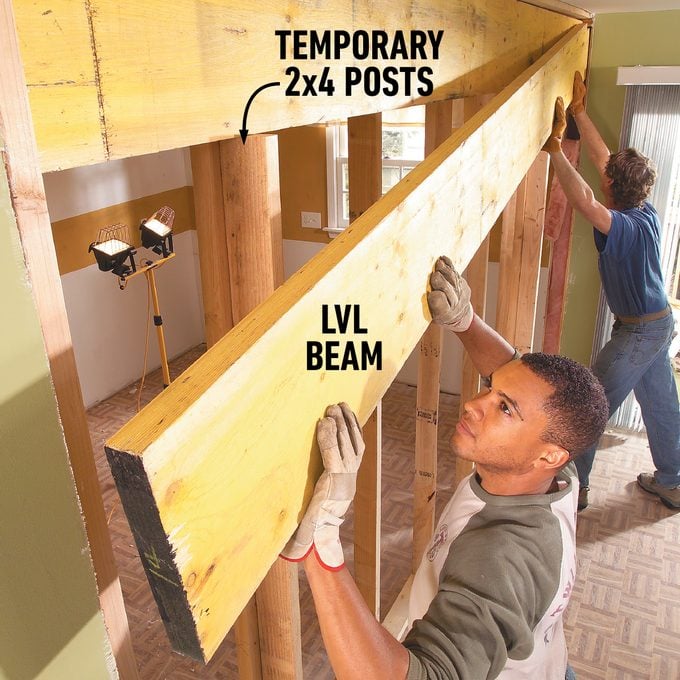
Add a beam where the wall was
A two-part laminated-veneer- lumber (LVL) beam is strong enough to support the load above. Built-up 2×4 posts will support the ends of the beam.
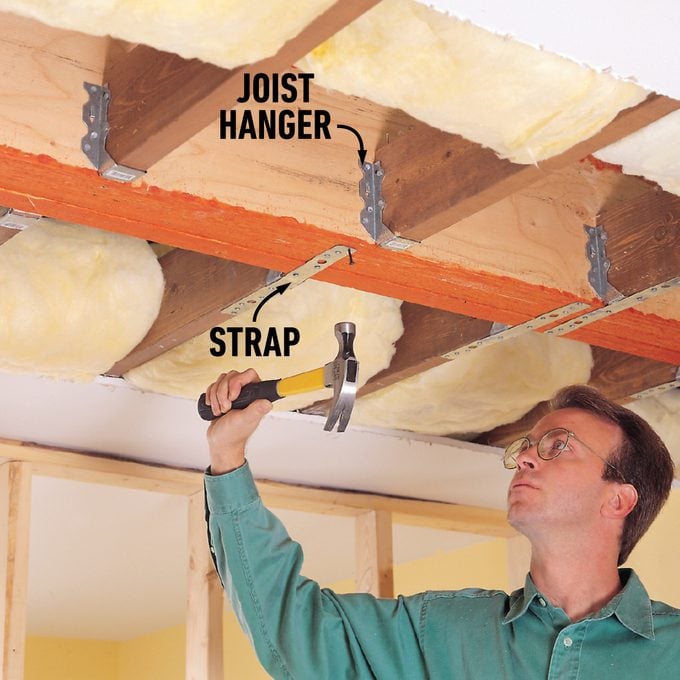
Add hangers and straps
After the new recessed beam is in place, joist hangers and straps are added to tie everything together.
First Steps for Load-Bearing Wall Removal
If you want to remove a load-bearing wall, the main thing to keep in mind is that you have to replace the wall with some other means of support and transfer the weight down to the foundation.
If you plan to remove a bearing wall, we recommend hiring a structural engineer. An engineer will inspect the house, calculate the size of the beam and posts you’ll need, and determine whether you’ll need to add support under the posts. In most cases, the city will require beam calculations in order to approve a permit, so the money spent on an engineer won’t be wasted.
Call around to find a structural engineer who’s familiar with residential construction and is willing to take on a small job at a reasonable cost.
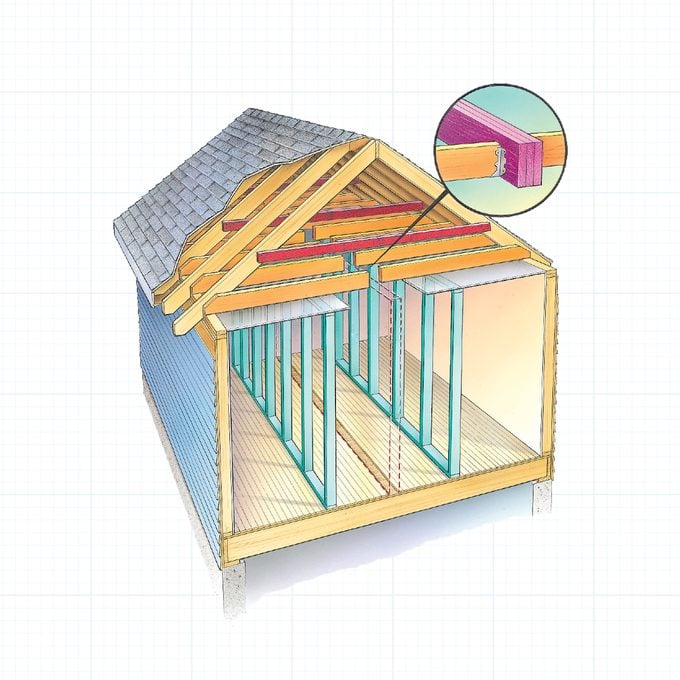
What Else Should I Know Before I Remove a Wall?
Taking out a wall is one of those projects that can mushroom into a lot more work than you originally intended. For example, it’s easy to overlook the fact that you’ll have to patch or replace the flooring. If you have hardwood floors, and the boards run parallel to the wall you’re removing, you can easily patch in floorboards.
Keep in mind that you’ll still have to refinish the floors to blend in the patch. If the flooring boards run perpendicular to the wall, the job gets a lot more difficult.
If you have carpet, tile, vinyl or laminate flooring, you’ll probably have to replace it or put up with an obvious patch. The only other option is to install a strip of wood or some other threshold-like treatment to cover the gap where the wall was. And remember, you’ll also have to patch the walls and ceiling alongside the new beam and posts, and touch up or repaint the newly joined rooms. Adding these costs to the budget now will avoid surprises later.
